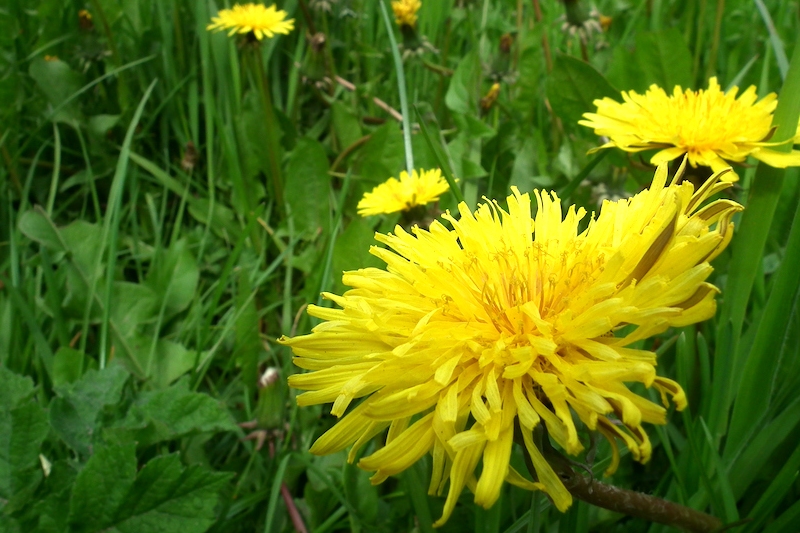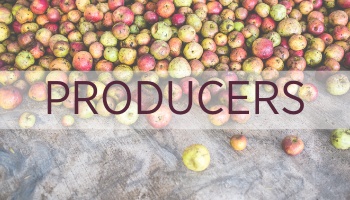Foraging for Dandelions
By James Wood of Totally Wild UK.
I Rejoice when dandelions come in to flower, their yellow satellites open up, following the sun throughout the days, telling me spring has arrived and summer is shortly coming.
Dandelions are seen as ‘common weeds’ but when we think of them with permaculture in mind, we need to start turning our problems in to solutions. Instead of wasting our time and effort removing these extremely productive plants, let’s just utilise them instead.
Firstly, you don’t have to tend to dandelions, you don’t have to actively water them, you can find them in abundance almost everywhere and they self-seed, on top of that every part of the plant is edible and it supplies us with something useful at every time of the year – if this was a commonly cultivated plant, that description would put it as one of the best plants to have on your land.
Through this article we will learn how to correctly identify dandelions and learn a couple of edible uses for it at this time of year, turning this problem in to free food.
Dandelions: Physical Characteristics
The dandelion is an extremely effective perennial, having the ability to grow from seed and root segment. A single plant can produce up to 5,000 seeds, which have the ability to travel in the wind over 200 metres from their origin. They also do not need to be pollinated to reproduce. Dandelions grow above a sturdy taproot that can grow over 30cm down, forming a basal rosette of deeply lobed leaves.
The leaves can grow from 5-50cms long and 2-10cms wide, the leaf can vary slightly from one to another but all leaves are typically oblong or obovate in shape becoming more narrow towards the base of the plant. The leaf edge ranges from being shallow to deeply lobed but they are always lobed in some way, giving them the appearance of lions’ teeth.
A single flower head grows from a single, hollow leafless stem that can grow up to 50cms and on breaking exudes white latex. The yellow flowers grow from a single centre and resemble an opened traditional Japanese umbrella. This umbrella eventually becomes a white puffball of seeds, which can easily be carried for dispersal by the wind.
Known Hazards
Dandelion root tea is sometimes taken to increase people’s appetite, what it also does is release sugar into the blood, so as a diabetic it is worth keeping this in mind if you’re planning to drink dandelion root tea. Those with very sensitive skin may get contact dermatitis when touching the latex (but the latex is also good for killing off warts!)
James Wood is a renowned experimental wild food forager. Running wild food cookery and foraging courses throughout the UK.
Dandelion Flower Jam
This delectable jam not only looks amazing it also tastes better than you could ever imagine, it is sweet, fulfilling and zesty, going perfectly on toast, crumpets, scones and as cake filling. When I hand this taster on my courses almost everyone instantly begins collecting dandelion flowers to make more of the stuff.
Ingredients
– Three cooking apples, peeled and cored
– Half a carrier bag of dandelion flowers
– Three squeezed lemons
– Seven hundred and fifty grams Jam sugar
– Six hundred ml, boiling water
Method:
– Put the peeled and cored apples in a pan with the hot water and 3/4 of the dandelion flowers (with green on), simmer for 10 mins.
– Strain the mixture through a sieve using the back of a spoon to push as much through as possible.
– Add the strained liquid back to the pan and add the lemon juice and sugar
– Stir over a low heat until the sugar has dissolved and then add the rest of the dandelion flowers (petals only—remove the green bits)
– Boil vigorously until the setting point is reached.
– Put in to containers and allow setting.
– Use within 6 months and 2 weeks once opened.
Dandelion Flower Wine
This is a wine you can begin to brew now and truly enjoy slap bang in the middle of summer, a cold glass of this smooth vibrant orange wine tastes like the joy of the sun herself. Enjoy with friends at a BBQ or with a great book out on the deck.
Ingredients
– One regular carrier bag of dandelion heads
– One kg white sugar
– Two lemons
– Two oranges
– Four litres water
– One sachet yeast
– Demi-john
– Air lock
Method
– Put the dandelion flowers in a large pan.
– Pour a kettle full of boiling water over the dandelion tops and leave to infuse for 24 hours.
– Strain the dandelion tops from the juice, keep the strained liquid and pop the spoilt tops in the compost.
– Add the juice of the lemons and oranges, the sugar and remaining water and stir until all mixed in sufficiently
– Add the yeast, put a cloth over the top of whatever container you’re brewing in and leave for 24 hours to start fermenting
– Pour this mixture in to your demi-john and put on your airlock
– Leave for as long as possible, at least 1 month
– Decant in to your storage bottles (I recommend plastic in case there’s any extra fermentation taking place that could cause glass to smash)
– Enjoy chilled on a sunny day.












